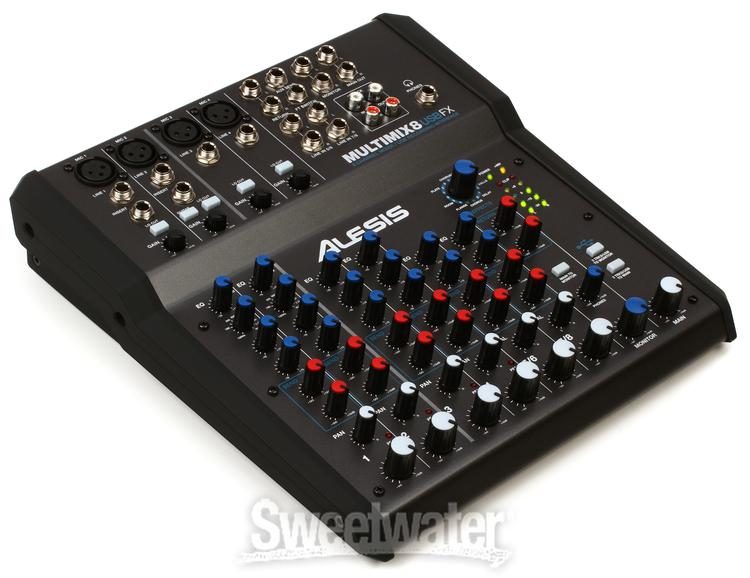

- #Alesis multimix 4 usb tutorial driver#
- #Alesis multimix 4 usb tutorial manual#
- #Alesis multimix 4 usb tutorial professional#

It is equipped with 6 slices (two stereo) and four with XLR jack (with gain, phantom power supply and low pass (75Hz)) and two with two jack, they all of a 3-band EQ (80Hz / 2.5kHz/12kHz) of two settings to (one attributions to the channel effect) adjustment of balance and a general levelĪn AUX send (stereo), returns two AUX (stereo), a master output, a control room and headphonesĬhannel effect (not set) is available to 99 preset Is Rack? yes thanks to the kit sold separately for this purpose (20 € I think), but I do not see the point because it is for home studio principaly travel. Main monitoring and separate outputs (balanced jack 6.35) I think that for the price, the mixer is alright, although, I might look for it second hand to save a little money, since it is built strong and has not broken on me yet.Ĥ mic / line XLR + jack with adjustable gainĢ auxiliary outputs (with a routable to the multi-effect board or out).Ģ8 Bit Multi-FX with 100 presets integrated effects including reverbs, delays, chorus, flanger, pitch and multi effects I would recommend the Alesis Multimix 8 with USB 2.0 over this version with USB 1.1. You have to re-boot your computer to fix it. I've used this mixer for about 6 months and my only problem with it now is that it wont work if the cable comes unplugged. The on-board eq's are kind of lame, so I'm marking it down a few points because of that, but everything else worked out ok. I did not pick up any hiss from the mixer and the EQ was fine. I did not notice any problems with the sound.
#Alesis multimix 4 usb tutorial manual#
All the functions are clear as day and the manual and online support makes everything much easier to learn if you have any questions. The configuration is fairly simple, it takes about a month of just fooling around with it to master it. The product includes Cubase, and it also works with just about any other recording program. The sampling rate is a 44.1 to 48 kHz operation. And you can only use one effect at a time. There is an on board effect program that has 100 different effects, although most of them are chorus, reverb, delay, pitch change, or a combination of a few. There are high, mid, and low eq's for each channel. There is a headphone out, a stereo 'main mix' out, and a stereo 'control room' out. This could also, however, been attributed to a slow processor or slow sound card. One more thing, which I believe may be fixed in the version that has a USB 2.0 connection, is that when you are recording over an existing track and want to hear live playback of what you're currently recording, there is a slight delay. The stereo recording flaw is alright because you can split up the tracks to go into the left or right channels, so you can really record up to 8 channels, on 2 separate tracks at time. These are minor flaws, but they are noticeable none the less.
#Alesis multimix 4 usb tutorial driver#
The three flaws I've found with it are that it 1) only lets your record 1 stereo track at a time 2) it will only work if it is plugged into the computer before you turn the computer on and 3) it was difficult to get the audio driver to work on my computer. It's very easy to use, and as has not broken or shut down on me once.
#Alesis multimix 4 usb tutorial professional#
It is not a high quality, professional mixer, but if you are looking for a good piece of equipment to start recording to a computer with, this is your product.

The product does, however, have some setbacks, that may have been taken care of in the later models. It has taken my recordings to the next level. I purchased the Alesis Multimix 8 about six months ago and am so grateful I did.


 0 kommentar(er)
0 kommentar(er)
